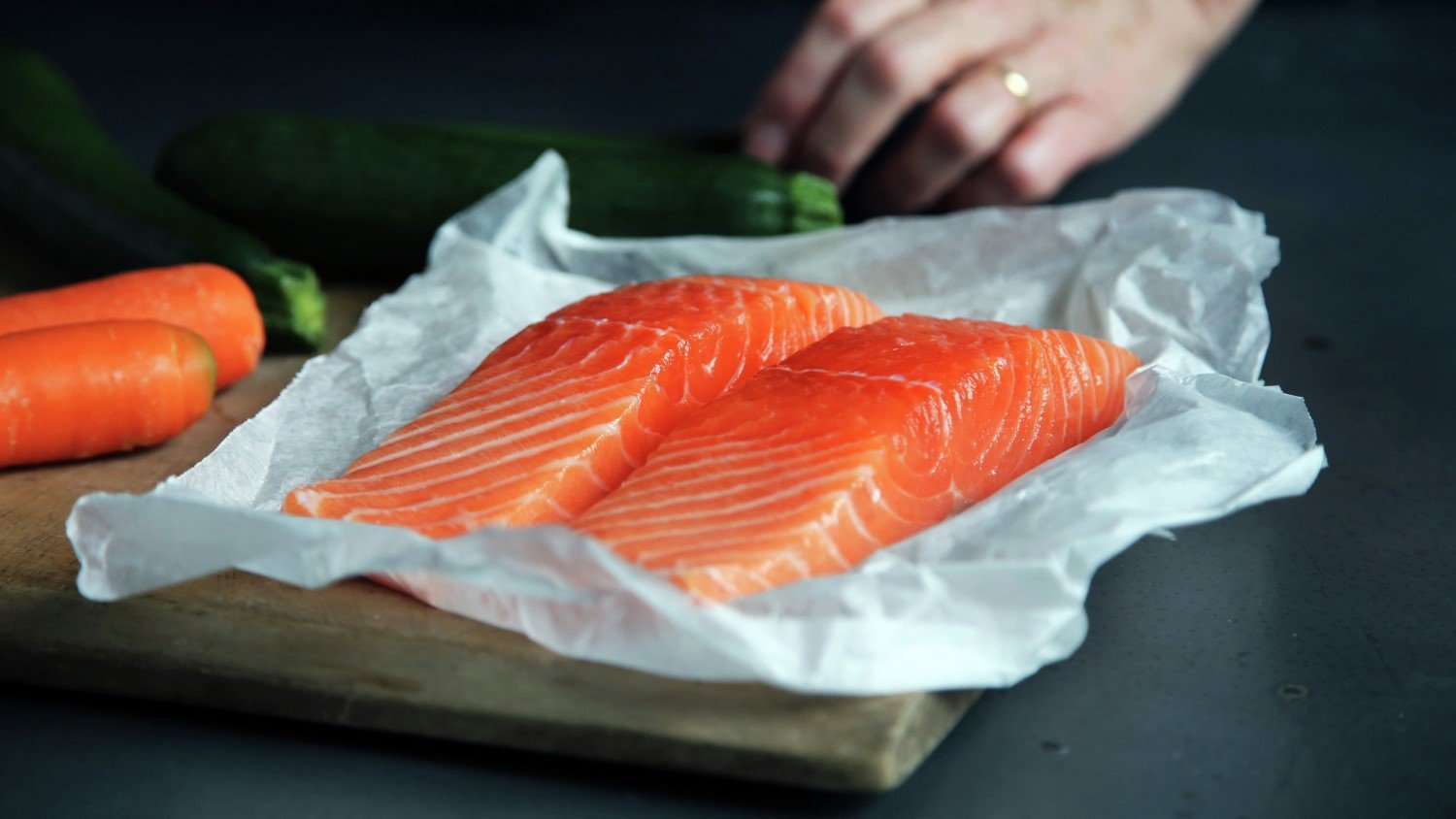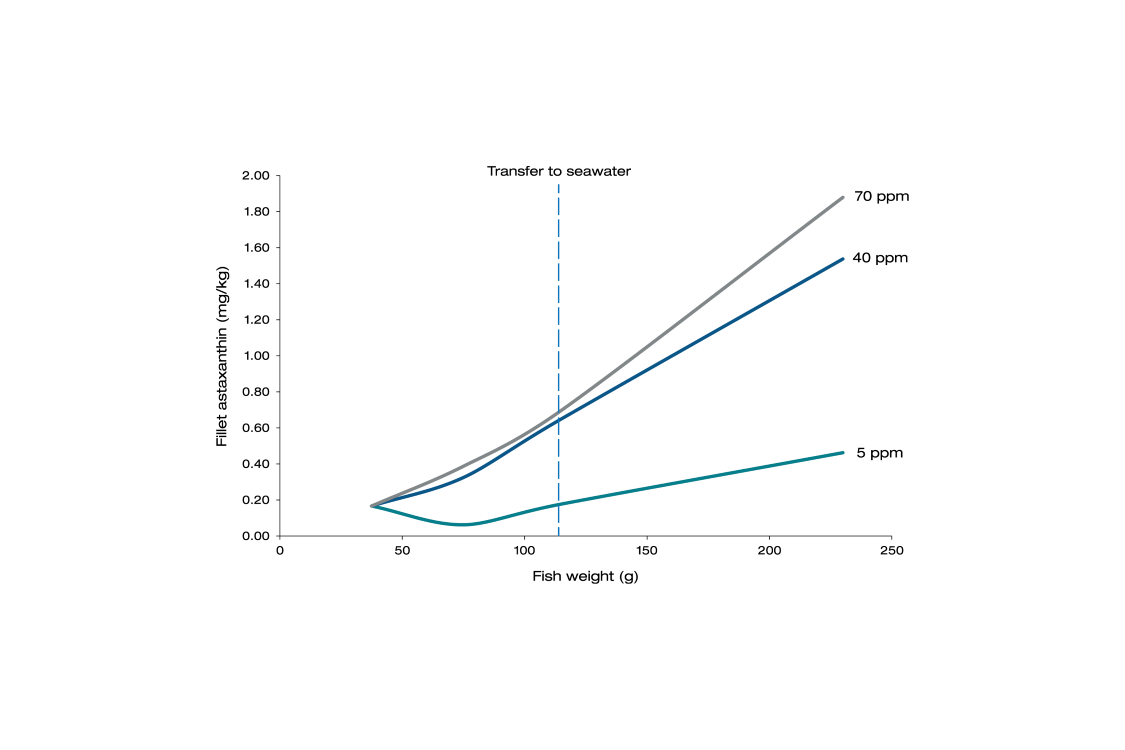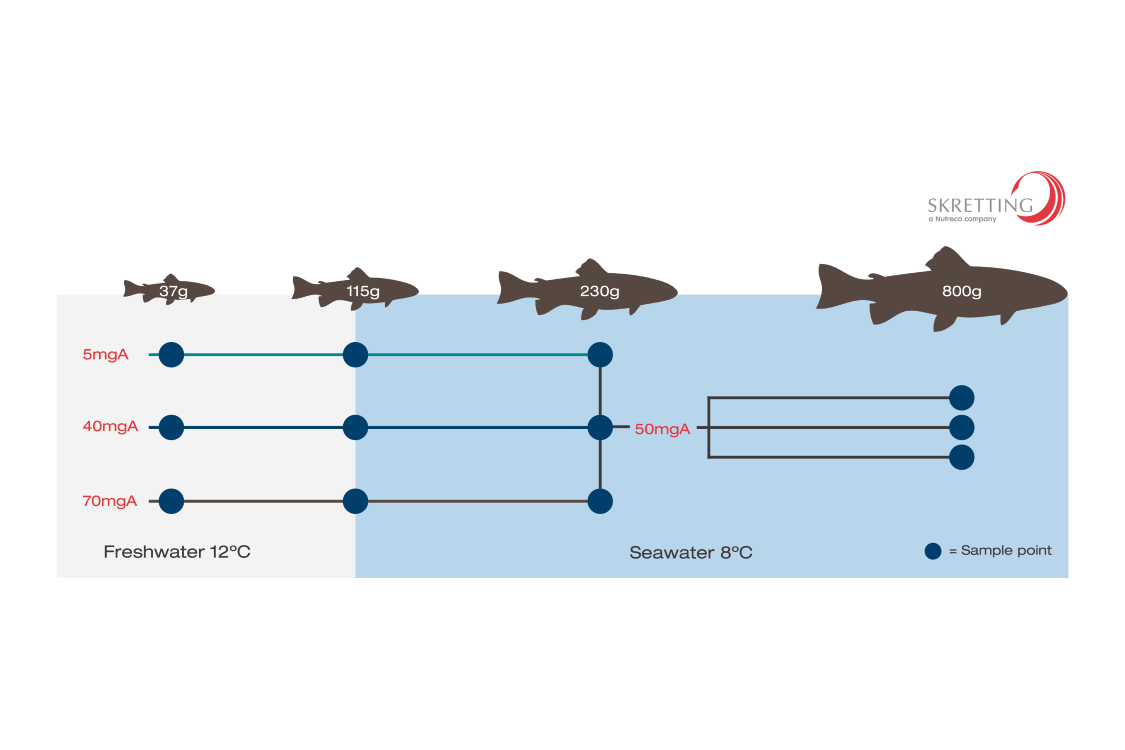To help the fish that they put into open seawater sites achieve optimum growth, performance and health, many Atlantic salmon producers around the world have in recent years elected to extend the period that juveniles spend in the freshwater phase of grow-out.
A head start for salmon smolt pigmentation
– Skretting reveals pigmentation breakthrough

Consequently, the reduced time that the smolts spend in seawater before harvest, aligned with the generally faster growth rates seen in salmon production today, have contributed to a steady decline in the pigmentation period.
The pigment in salmonids that provides their prized pink colour is the carotenoid astaxanthin. Obtained naturally from plankton, algae and crustacean shells as well as in nature-identical synthesised form, astaxanthin is also an antioxidant and a precursor to vitamin A. In cases where organic feeds are being formulated, the pigment is derived from bacteria.
While salmon in the seawater stage of production have always been given pigmented feeds, standard practice has been to not provide it in quantities sufficient for pigmentation before transfer into these sites. Longstanding regulations relating to feed additives also stipulate that synthetic astaxanthin cannot be given to salmonids in the first six months of their life. While this rule was recently lifted in the EU*, it currently remains in place in Norway.
Whereas 10 to 15 years ago, it was not unusual for salmon farmers to put 40g smolt into seawater sea pens, today the tendency is for the smolt being transferred to be considerably larger and much further along in the growth cycle.
“With the sea production time now several months shorter, the salmon are missing out on significant pigmentation time ahead of harvest. Year-on-year, we have seen pigmentation decline in various markets, including Norway, Canada and Chile,” says Leo Nankervis, Team Leader Salmonid Nutrition at Skretting Aquaculture Research Centre (ARC).
To overcome this particular pigment challenge, and following extensive trials with astaxanthin, Skretting, as the global leader in aquaculture feeds, has formulated freshwater-specific feeds containing astaxanthin, enabling pigmentation to begin prior to transfer.
“These feeds give salmon farmers the opportunity to get a head start on the pigmentation process, which can give in excess of 0.5ppm extra astaxanthin in the fillet by the time the fish have transferred,” says Nankervis.
(Findings from these trials are shown in the supplied Pigmentation figure.)
Modelling studies
To align with the aforementioned synthetic astaxanthin regulations, Skretting ARC’s freshwater trials, which were led by in-house researcher Guido Riesen, were conducted with salmon juveniles of approximately six months of age and were continued through the seawater phase of growth (see the supplied Experimental design figure). The fish were transferred to seawater sites at a size of 115g, at which stage they received feeds containing the customary levels of pigment.
Findings established that diet formulations containing 70ppm pigment offered a freshwater model that is most aligned with the seawater model.
“The uptake utilisation of astaxanthin in freshwater was very similar to that in seawater. This was excellent news as it meant we could model for both stages,” says Nankervis. “It was also about this time that the EU* took away the six-month limit for pigmentation, making it commercially possible to use pigment throughout the freshwater stage. Although, at the moment, the regulation still exists in Norway.”


Market benefits
Roar Sandvik, Global Product Manager for Freshwater & Transfer Feeds at Skretting, says the new freshwater feeds fulfil an increasingly important requirement in the production system for salmon, and together with the knowledge gained through the R&D process, they can provide invaluable support for fish farmers wishing to establish a clear strategy for achieving optimal pigmentation.
“The pigment astaxanthin is an essential component of the diet of salmon; among other things, it influences the growth and health of the fish. It also gives them the appearance that end-consumers look for. Therefore, an important goal for fish farmers has always been to achieve good, even pigmentation,” says Sandvik. “However, it is clear that the reduced time that salmon are now spending in the seawater stage of growth has been challenging the pigmentation process in most production regions. These new formulations are a big advance for the marketplace because they address that imbalance.”
Stress management
Skretting ARC’s pigment studies have also furthered knowledge in the equally important area of sealice treatments and their effects on pigmentation.
Hydrogen peroxide has become widely used as a delousing agent. In Norway, for example, its use as a bathing treatment against sea lice and other challenges has increased several-fold in recent years. However, with hydrogen peroxide being an oxidising agent and astaxanthin being an antioxidant, Skretting ARC researchers felt it was important to learn to what degree the former decreases the pigment level in the flesh of the fish. These investigations were led by senior researcher Gunvor Struksnæs.
Concurrently, they found a certain number of fish will break down some of their astaxantin into idoxanthin (a metabolite of astaxanthin) when faced with a stressful event. Interestingly, some individuals are affected to a much larger degree than others, which now enables better understanding of the variation that we see in the pigmentation response between individual fish.
These findings complement the research Skretting ARC has been conducting with larger fish in the seawater stage – looking at the effects of hydrogen peroxide bathing, explains Nankervis.
“We have found a downturn of pigmentation following hydrogen peroxide bathing, but it is not as high as we initially thought it might have been. Additional simulations that haven’t included bathing but have lowered the water levels have also triggered the breakdown of astaxanthin to idoxanthin.
“We have confirmed that stress, particularly crowding stress, is a major contributor to the transfer of astaxanthin to idoxanthin in salmon. This knowledge has given us another important avenue of further research as we look to establish a bigger picture understanding of the mechanisms that are controlling the degrading of pigmentation in larger fish in seawater systems,” says Nankervis.
Notes
* Following a request from the European Commission for the Panel on Additives and Products or Substances used in Animal Feed (FEEDAP) to deliver a scientific opinion on the safety and efficacy of astaxanthin as feed additive, the regulation preventing salmonids being given synthetic astaxanthin in the first six months of their life has been lifted, with a dietary concentration of 100mg/kg deemed safe.